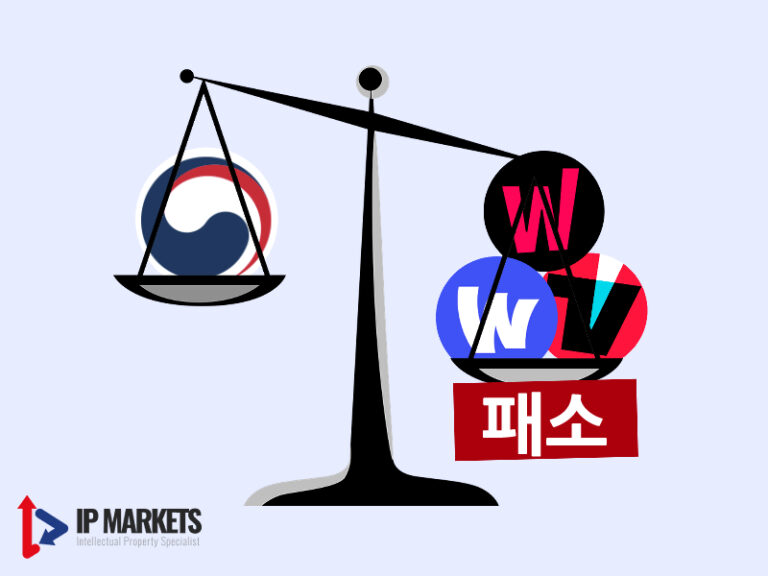[동아시아포럼] 일본 교원 부족 사태의 현주소
일본의 고질적 교원 부족 문제, 저출산에도 지속적으로 심화 교원 수급 정책 실패 및 살인적 업무강도가 주요 원인으로 파악돼 장시간 근무에 대한 적절한 보상과 열악한 근무 환경 개선이 급선무
[동아시아포럼]은 EAST ASIA FORUM에서 전하는 동아시아 정책 동향을 담았습니다. EAST ASIA FORUM은 오스트레일리아 국립대학교(Australia National University)의 크로퍼드 공공정책 학교(Crawford School of Public Policy) 산하의 공공정책과 관련된 정치, 경제, 비즈니스, 법률, 안보, 국제관계 및 사회에 대한 분석 및 연구를 위한 플랫폼입니다.
저희 폴리시코리아(The Policy Korea)와 영어 원문 공개 조건으로 콘텐츠 제휴가 진행 중입니다.
출산율 저하와 인구 고령화로 학생이 점점 줄어들고 있음에도 불구하고, 일본은 현재 초·중·고교 교원 부족 사태가 심화하는 추세다. 교원 부족 사태란, 학교에 배정된 교사 수가 지역 할당량을 충족시키지 못하는 상황을 의미하는 것으로, 이는 기간제 교사를 포함한 교원 인력에 대한 안정적 확보의 어려움에 따른 것으로 판단된다.

일본 문부과학성이 실시한 교사 부족 실태조사 결과에 따르면 2021년 초 공립학교 ‘교사 부족 비율(교사 부족 인원수/학교에 배당된 교사 정수)’은 학교급별로 초등학교 0.26%(979명), 중학교 0.33%(722명), 고등학교 0.1%(159명)로 나타났다. 이러한 교사 부족 문제는 일부 중학교와 고등학교에서 특정 과목 수업을 진행할 인력이 없어 수업이 중단되는 사태를 낳기도 했다. 교사 부족의 가장 큰 원인으로는 정책 기조·사회 풍조 변화 같은 거시적 요인과 교사들의 열악한 근무 환경·사회적 인지도 하락 등의 미시적 요인이 꼽힌다.
정부의 교원 수급 정책의 실패와 거센 후폭풍
앞서 일본은 고이즈미 준이치(小泉純一)로 전 총리 정권 시절에 지방 분권 개혁을 추진한 바 있다. 2000년 ‘지방분권추진 일괄법’을 시작으로 2001년·2004년 ‘지방 교육 행정법’을 개정하는 등 2000년대 전반에 걸쳐 △교육장 임명승인제의 폐지 △국가의 관여 약화를 핵심으로 하는 교육의 지방분권화·규제 완화를 추진했고, 이에 따라 지방자치단체는 교원의 수·급여·근무 환경에 관해 국가 교육 예산 한도 내에서 자유로이 조절할 수 있는 재량권을 획득했다.
다만 분권화의 진행과는 별개로 국가 재정 차원에서 교육 부문의 예산 증가는 이뤄지지 않았으며, 몇몇 지방자치단체들은 오히려 출산율 감소를 이유로 정규 교사의 임용을 줄이고 기간제 교사의 수를 늘리는 등 유동적으로 지방 재정을 운영하려는 풍조까지 나타났다. 이에 실제로 초등학교에서 정규 교사를 대체해 기간제 임시 교사들이 담임교사를 대신하는 사례가 빈번했다.
일본은 경제협력개발기구(OECD) 회원국 중 세계에서 가장 낮은 출산율을 기록하는 국가 중 하나로, 현재까지도 일본의 합계 출산율은 지속적인 하락세를 띠고 있다. 이런 와중에 베이비부머 세대(1953~1959년생)의 은퇴와 함께 육아휴직자 수까지 증가하면서 더욱 심각한 교사 부족에 시달리게 됐다.
‘출산율의 저하’와 ‘육아 휴직자의 증가’는 언뜻 상호 양립이 불가능해 보인다. 그러나 교육계 종사자의 성비 구성을 들여다보면 초등 교원의 59.9%, 중등 교원의 43.4%, 고등 교원의 35.4%가 여성이다. 여성 육아 휴직자의 증가가 초등학교 교원 부족 사태에 미치는 영향을 짐작해 볼 수 있는 대목이다. 여기에 더해 일본의 보육 시설 부족 또한 여성 육아 휴직의 장기화에 일조한 것으로 드러났다.
특히 일본에선 여전히 여성이 육아를 포함한 가사 노동을 수행해야 한다는 가부장적 문화가 지배적이다. 이 때문에 가사도우미를 고용하는 등 집안일에 외부인을 끌어들이는 경우가 흔하지 않다. 이에 일본 국토교통성은 고령화 문제와 육아 문제의 동시 해결을 목표로 ‘3대 동거 가정에 대한 감세 및 주택 제공’ 등의 정책을 펼쳤으나, 이는 현 실태를 반영하지 못한 정책이라는 비판을 받았다.
교사의 업무 가중과 열악한 근무환경
일본 교사들의 과도한 업무량 및 열악한 처우도 문제다. 일본의 초등학교는 학급에 담임 선생님을 배정하는 시스템을 기본으로 운영된다. 담임 교사는 일본어, 수학, 과학, 사회의 4가지 주요 과목을 가르치는 것 외에도 윤리, 체육, 글쓰기, 외국어의 과목의 교육 역시 담당하게 된다. 수업 외적으로도 조례·종례, 학부모 간담회, 식사와 교실 청소 통제 등 부가적으로 신경 써야 할 일도 적지 않으며 저학년 담임 교사의 경우 점심시간 야외 활동도 추가로 진행해야 한다. 이렇듯 초등학교 교사의 업무는 연속적인 데다 사실상 근무 중 휴게시간도 거의 없다.
중고등학교의 사정도 크게 다르지 않다. 중고등학교의 교사들은 수업 외에 동아리 활동을 관리해야 하는데, 해당 업무는 주말까지 연장되는 경우가 많아 대부분의 중고등학교 교사들은 사실상 주 6일 근무를 하는 실정이다. 또한 통계에 따르면 초등학교 교사의 57.8%, 중등 교사의 74.2%가 주당 근무 시간이 60시간을 초과하는 것으로 조사됐는데, 이는 일본 법정 주당 근무 시간인 40시간을 훌쩍 뛰어넘는 수치다.
교직에 대한 인식 추락의 여파
상황이 이렇다 보니 교사는 더 이상 희망 직업이 아닌 기피 직업으로 전락했다. 교재 연구에 매진하는 것은 기본이고, 학교폭력 상담 및 학부모 항의에도 응대해야 함에도 불구하고, 이 모든 추가 근무 사항은 대부분 ‘무보수’로 이뤄진다. 일본 교사들이 잔업·야근 수당 등의 추가 근무에 대한 보상을 제대로 받지 못하고 사실상 무급 노동에 내몰린 상황은 초등학교에서 고등학교에 이르기까지 공통적으로 나타나는 문제로, 전문가들은 이를 두고 ‘보상적 착취’ 현상이라고 지적한다.
교사를 희망하는 사람이 줄어들면서 교원 임용 경쟁률 역시 2000년을 기점으로 급락하는 추세다. 이를 타개하고자 2005년 이후 일본의 교육 규제 완화는 각종 사립대학교에서 다양한 교원 양성 프로그램을 개설하도록 장려했고 이에 교원 양성 프로그램을 개발·추진한 학교 수가 급증했다. 하지만 이로 인한 부작용도 적지 않았다. 규제 완화 전에는 학력 요건을 충족하지 못했던 학생들도 일정 학점만 이수하면 교사 자격을 손쉽게 취득할 수 있게 됨에 따라 역량이 떨어지는 교사들까지 마구잡이로 채용되면서 현장 교사들의 업무량을 가중시키는 악순환의 굴레가 생겨난 것이다.
이에 일본의 일부 지자체에서는 공업·보건·간호 등 실업계 과목들의 교사 공백 심화 문제에 대응하기 위해 교원 자격이 없는 일반 직장 경력자들에게 ‘특별 면허’를 부여하고 이들을 채용하는 방식을 택했다. 이러한 특별 채용 움직임은 최근 일반 교과목까지 확대되는 추세로, 실제로 교사 부족 사태의 해결에 기여하고 있는 것으로 파악됐다. 그러나 이 역시 부작용이 만만치 않았다. 특별 면허의 이점을 남용해 여러 지자체에 걸쳐 겸직하는가 하면, 정규 교사 양성 과정을 거치지 않은 사람들까지 채용되는 사례가 발생한 것이다. 이 때문에 특별채용 교사들의 수준이 저하됐다는 비판을 받기도 했다.
현재 일본 정부 당국은 교사 부족 문제를 해결하기 위해 다기간에 걸친 계획적인 채용과 교사 연령 제한의 확대·철폐 등 다양한 조치를 검토하고 있다. 그러나 교사 부족 문제의 본질은 장시간 근무와 추가 근무에 대한 불충분한 보상과 살인적인 근무 환경에 있다. 이뿐만 아니라 일본 사회의 워라밸(일과 삶의 균형) 붕괴와 교사 양성 교육의 질적 하락 역시 현재의 교원 부족 사태와 밀접하게 관련돼 있다는 사실을 일본 정부는 간과하지 말아야 할 것이다.
Japan’s paradoxical teacher shortage
Despite its low birth rates, Japan is struggling with a shortage of teachers. In Japan, a ‘teacher shortage’ is a situation in which the number of teachers assigned to schools does not meet local quotas. Vacancies occur because it is not possible to secure teachers, even temporarily assigned teachers.
![]()
According to this definition, the teacher shortage at the beginning of 2021 was 0.26 per cent in primary schools, 0.33 per cent in middle schools and 0.1 per cent in senior high schools. The problem of middle and high schools not having teachers for some subjects was resolved by the middle of the 2021 school year.
The causes of this teacher shortage include macro aspects — such as policy and human-made trends — as well as micro aspects related to the way teachers work and the social recognition they receive.
Japan’s first policy change was the decentralisation reforms initiated in the 2000s under former prime minister Junichiro Koizumi. These reforms allowed local governments to decide the number, salary and treatment of teachers as long as they were within the total teacher salary budget.
Yet there was no increase in the budget from the national government and some local authorities refrained from hiring in anticipation of a declining birth rate. This incentivised local governments to reduce the number and salaries of regular teachers and use the money saved to hire more non-regular teachers whose labour costs were more affordable. With classroom teacher replacement in elementary schools, there have been cases where temporarily appointed teachers or managers have replaced actual homeroom teachers.
Japan has one of the lowest birth rates in the world, and it is still declining. But as the so-called baby boomer generation retires, so too has the number of people taking maternity leave increased — the combination of which has stretched Japan’s workforce thin. This increases the demand for non-permanent teachers, resulting in a shortage of temporary appointments.
The declining birth rate and increase in the number of people taking maternity leave seem to contradict each other. But the proportion of women employed in education is 59.9 per cent in elementary schools, 43.4 per cent in middle schools and 35.4 per cent in senior high schools. This makes the shortage of teachers due to maternity leave particularly serious in elementary schools. The duration of maternity leave is also increasing because of the lack of licenced nurseries.
The expectation that mothers perform care work, including child rearing, is still strong in Japan. It is uncommon to hire nannies or outsource household chores. Conservative political parties have encouraged family self-help through three-generation cohabitation — but this does not reflect the reality of the younger generation, who mostly migrate to urban areas.
The next factor is the workload faced by Japanese teachers. Japanese elementary schools have a homeroom teacher system. Homeroom teachers teach four main subjects — Japanese, mathematics, science and social studies. They are also expected teach many other subjects, such as ethics, physical education, calligraphy and foreign languages. Teachers work with students to organise morning and ‘goodbye’ meetings, weekly class meetings, school lunches and classroom cleaning. In the lower grades, teachers play with students in the school yard during the 20-minute break.
It has been noted that ‘the work of elementary school teachers is continuous and they hardly get any break time’. In middle and high schools, teachers supervise club activities, which involves coaching not only after school but also on weekends. Many teachers work six days a week. As a consequence, 57.8 per cent of primary school teachers and 74.2 per cent of secondary school teachers exceeded 60 work hours per week.
Teaching is no longer a dream job for young people. They must research teaching materials, deal with bullying and address parents who complain to schools, while also receiving zero overtime pay. Long hours of unpaid work are a common problem from primary to higher education, and is said to be a ‘rewarding exploitation’ of teachers.
The competitiveness of teacher examinations has continued to fall sharply since 2000, as fewer people show interest in qualifying to become a teacher. Since 2005, government deregulation has led to a rapid increase in the number of universities that can train schoolteachers. Even students whose academic ability would not have met former requirements can now obtain teaching qualifications with a certain number of credits. .
There has also been an overuse of special licences to take advantage of the severe shortage of teachers and an increase in the number of technical subject teachers working concurrently across local authorities. The quality of full-time teachers is now a matter of concern. At the same time, there is a shortage of non-regularly employed teachers.
Measures to address these problems include planned recruitment across a multiyear timeframe and the expansion or removal of teaching age limits. Yet teacher shortages are more closely related to the long working hours and ‘rewarding exploitation’ of teachers. These problems are linked to the poor work-life balance in Japanese society and the quantity and quality of teacher education.
원문의 저자는 시마우치 사에(Sae Shimauchi)도쿄 도립 대학교(Tokyo Metropolitan University) 국제 센터 소속 부교수입니다.




























